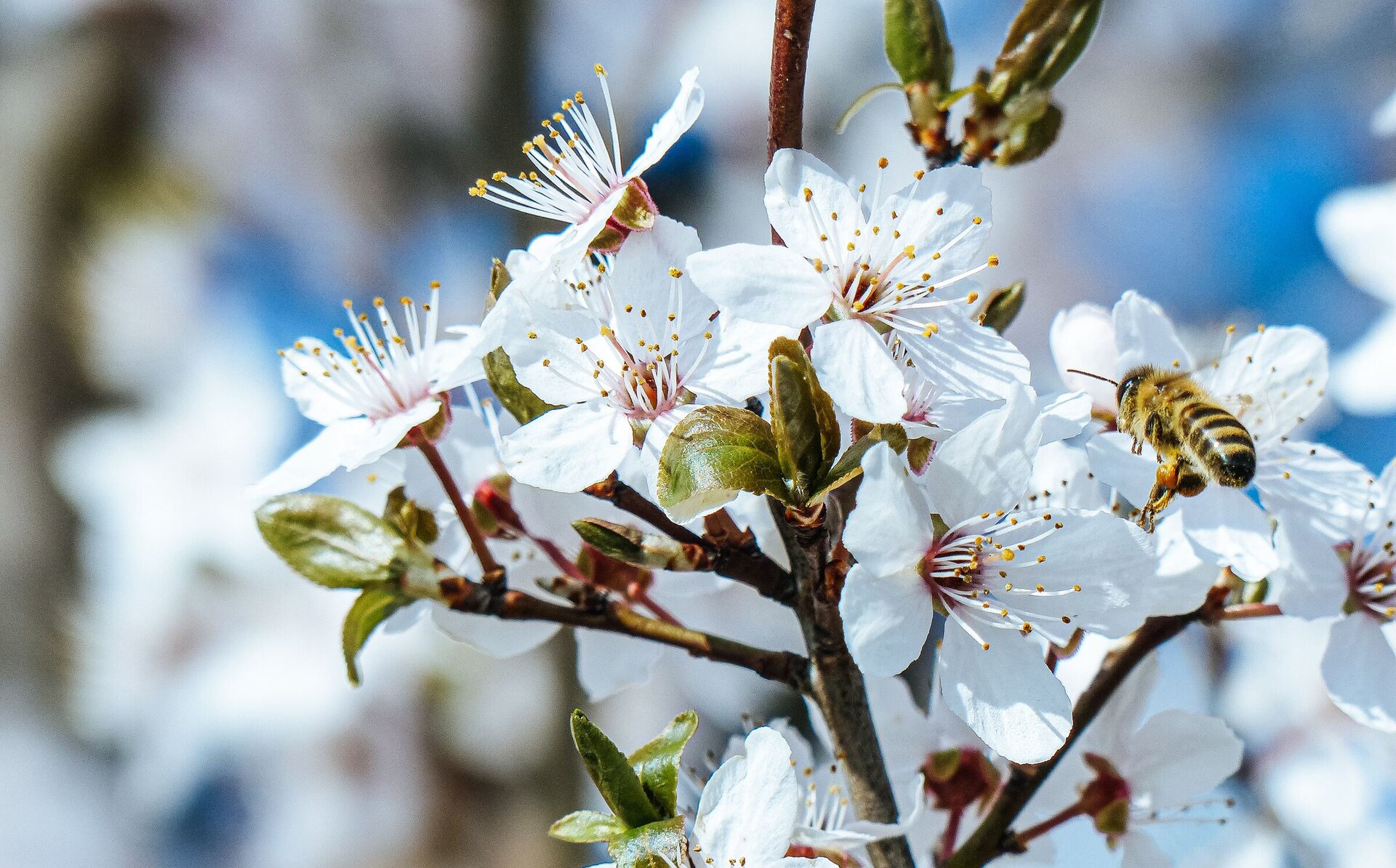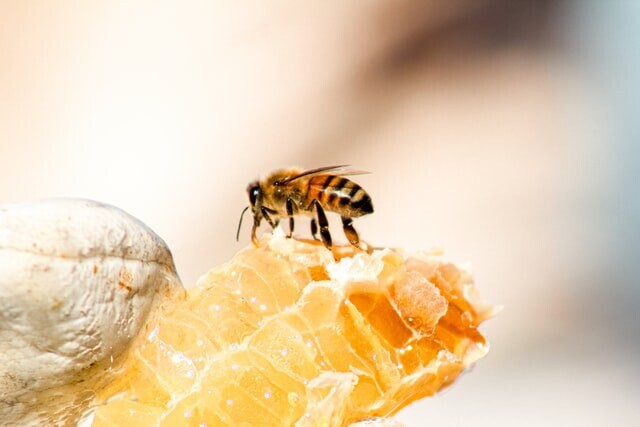Honey is one of the oldest known sweeteners. It has been an essential part of our diet since earliest times and there is increased interest in its culinary and health properties. But what is honey? How is it made? How is it extracted from the hive? What is it good for?
What is Honey?
Honey is a thick, golden liquid created by hard working honey bees from nectar they collect from flowers. Honey is a solution naturally occurring elements found in the nectar such as sugars and water, along with amino acids, organic acids, proteins, lipids, anti-oxidants, dextrins and minerals. Honey also contains a number of different enzymes that bees add to the nectar that make it that special and unique product we love so much.
How is Honey Made?
During warm sunny days bees move from flower to flower collecting a sugary liquid, nectar, produced by each flower. A foraging bee will use it's long proboscis to suck the liquid from the flower and store it in it's honey stomach (this a special extra stomach just for storing nectar) until it gets back to the hive. While the nectar is in the honey stomach it mixes with enzymes that change its chemical make up.
When back at the hive the forager bee transfers the honey to a young working bee. This bee can chew on the nectar for about half an hour, adding more enzymes to break down the complex sugars and turn them into simple sugars. These simple sugars make it easier for the bees to digest and will decrease the risk of the honey going off. This is the reason why honey can last for a very long time. The bee then deposits the honey into a honeycomb cell. The bees in the hive fan the honey in the cells with their wings to evaporate excess moisture. When the honey is at the correct moisture content the bees seal the honey with wax from their abdomens, this is called 'capping'. To find out how bees make beeswax read our blog on beeswax.
Bees save this honey for eating during times of shortage. An interesting fact is that a bee's honey stomach can hold up to 70mg of nectar, it weighs just about as much as the bee does. A bee would need to visit between 100 - 1500 flowers to fill their honey stomach.
How is the Honey Extracted?
Beekeepers normally have beehives with frames inside that the bees draw out beeswax comb into cells for storing honey. Once the frames are filled with honey the the frames are taken out of the hive and the wax cap pings cut off to expose the honey in the cells. The honey can then either be pressed or placed in a centrifuge to spin the honey out. Honey can then be packed or creamed then packed.


Extracting honey by centrifuge Honey's taste, aroma, colour and texture differ considerably depending on the type of flowers the bees of that hive visit. And of course the type of trees and plants that grow in each region of the country differ depending on a variety of factors such as climate, soil type and temperature, altitude, humidity and geographical location. At Sweetree we don't blend honey from different areas, so each of our honeys are a true reflection of that area's flora. Much like a great wine reflects the terroir of where the grapes have grown, Sweetree Honey’s different varieties reflect the area and season the bees worked their magic. From the buttery and salted toffee apple taste of of Marokopa Spring to the gorgeous caramel and butterscotch flavour of the Hakarimata.
What is Honey Good for?
Of course, as mentioned at the start of this blog, honey is one of the oldest known sweeteners. Have a look at our many recipes using honey. There are many different uses for honey, read our blog, you may be surprised at some of the uses! Not only is it delicious to eat, honey is hailed for its medicinal properties – it is anti-bacterial, anti-viral, anti-fungal and packed with highly valuable nutrients. It is used in medical bandages, cough mixtures, throat lozenges, on sores, burns, etc. It is also fantastic for our skin, have a read about how you can add it to your skin regime.







